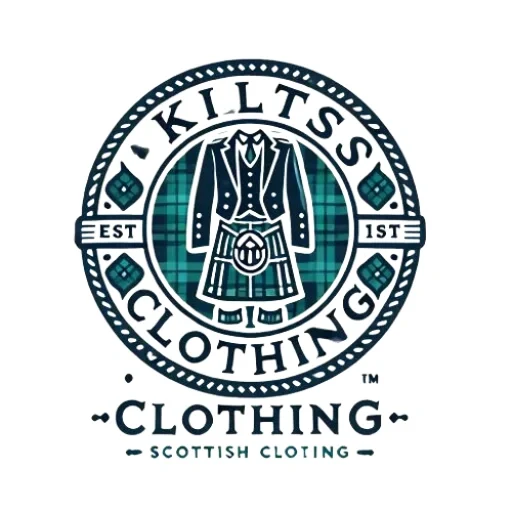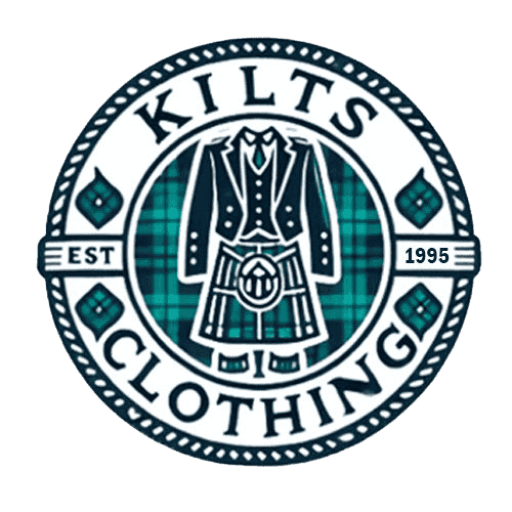The Kilt Outfit: Its Purpose, History, and Who Wears It

Kilts are more than just a piece of clothing; they're a statement of heritage, pride, and elegance. Over the centuries, the kilt has evolved into an iconic garment worn by many for various occasions, from weddings to formal ceremonies and beyond. Whether you're attending a traditional Scottish wedding, a formal event, or participating in a festival, the kilt brings a unique charm to any occasion.
But what exactly is a kilt? Why do people wear it, and who wears it? In this blog, we're diving deep into the purpose, history, and the modern-day wearers of the kilt outfit, so you can fully appreciate this remarkable piece of Scottish heritage.
What is a Kilt Outfit?
Understanding the Traditional Kilt Outfit
At its core, the kilt is a knee-length garment that is wrapped around the waist and fastened with a belt or buckle. Traditionally, the kilt is made of wool, usually with a tartan pattern. However, modern versions might also use fabrics like cotton, denim, or even leather. The pleats at the back are designed for flexibility and ease of movement, which makes the kilt not only stylish but also comfortable.
But the kilt isn't just a skirt—it's part of an entire ensemble that completes the look. The traditional kilt outfit includes several essential accessories:
- The Kilt: The main garment, often made from wool, featuring pleats at the back, and is usually worn with a belt at the waist.
- Sporran: A small, often ornamental pouch worn at the front of the kilt. It serves as both a practical and decorative piece.
- Kilt Hose: These are knee-high socks that are worn with the kilt. They are typically held in place with garters.
- Ghille Brogues: Traditional lace-up shoes designed to be worn with the kilt. These are usually made from leather and have long laces that wrap around the ankle.
- Kilt Pin & Belt: A kilt pin is used to keep the pleats in place, and the belt helps secure the kilt around the waist.
All these elements together create the authentic kilt look that is worn on various occasions, adding both style and functionality.
The Purpose of Wearing a Kilt Outfit
Why Do People Wear Kilts?
Kilts have a long-standing cultural significance. But in addition to their historical importance, kilts are often chosen for a range of occasions. Here are the key reasons why people continue to wear kilts:
Cultural and Heritage Significance
For many people of Scottish descent, the kilt represents a connection to their roots and heritage. It's not just an item of clothing—it's a symbol of Scottish pride. The tartan pattern worn by an individual or group often reflects their family clan, adding a layer of personal and cultural significance. Wearing a kilt is a way to celebrate one's ancestry and to honor Scottish traditions.
Ceremonial Purposes
Kilts are deeply rooted in ceremonial practices, especially within Scotland. They're commonly worn for weddings, festivals, and Highland Games. Whether it's the groom and his groomsmen sporting kilts on their wedding day or athletes wearing them at the Highland Games, the kilt is a staple of these significant events.
- Weddings: In Scotland, kilts are often chosen for groomsmen and grooms as a way to highlight the cultural importance of the occasion. Many couples choose the family tartan to ensure their wedding has a personalized touch.
- Highland Games: The kilt is worn by competitors participating in traditional Scottish events like the caber toss, hammer throw, and tug of war. The kilt provides the perfect mix of comfort, practicality, and tradition, all while adding to the authentic atmosphere of the games.
Fashion and Modern Wear
While kilts were once reserved solely for special occasions, they have since become a fashion statement. Modern kilts, made from lighter fabrics like denim and cotton, have moved beyond ceremonial wear and are now worn as a casual or streetwear item. They're often styled with modern shirts, jackets, and even sneakers, catering to a younger audience looking to blend tradition with contemporary style.
Comfort and Practicality
Kilts are remarkably comfortable. Unlike pants, they allow for easy movement. They are often worn in outdoor settings, especially for Highland Games or outdoor festivals. The wool and cotton fabrics allow breathability, making them ideal for long hours of standing, walking, or competing in athletic events.
The History of the Kilt Outfit
Tracing the Origins of the Kilt
The kilt has a fascinating history that dates back to the 16th century in Scotland. It started as a belted plaid—a large piece of cloth draped over the body and held in place with a belt. The Scottish Highlands wore this early version of the kilt as both a practical garment and a form of protection against the harsh elements of the region.
The Evolution of the Kilt:
Over time, the kilt became more structured, eventually evolving into the garment we know today. In the early 18th century, following the Jacobite Rebellion, the British government imposed a ban on wearing the kilt as part of an attempt to suppress Scottish identity. But in the 19th century, there was a revival of Scottish traditions, and kilts began to be worn once again, especially during royal events and the romanticism of Scotland.
The introduction of tartan patterns is a significant part of kilt history. Each family or clan had its distinctive tartan, and wearing one was a mark of heritage and lineage. Over time, these tartans became symbols of pride, with the colors and patterns reflecting the clan's origins.
The 19th Century Revival:
Kilts made a comeback in the 19th century, mainly due to Queen Victoria's fascination with Scottish culture. She and her family began wearing kilts in public, which made the garment popular once again. It led to the kilt becoming a symbol of Scottish pride, particularly for military regiments and ceremonial events.
Who Wears a Kilt Outfit?
The Traditional and Modern Wearers of Kilts
Kilts have always been deeply connected to Scottish culture, but over the years, they've found their way into the wardrobes of people from all walks of life. Here's a breakdown of who wears kilts today:
Scottish People and Heritage:
The most obvious wearers of kilts are people of Scottish descent. Whether worn for cultural celebrations or everyday use, the kilt remains a powerful symbol of Scottish identity. Many Scots still wear kilts during special occasions, such as weddings, birthdays, or religious ceremonies, proudly displaying their family tartans.
Military and Ceremonial Wear:
Kilts are often worn by members of Scottish military regiments, such as the Royal Scots Dragoon Guards, where they are part of the official uniform. Military kilts have been a tradition for centuries, symbolizing pride, honor, and bravery. They are also worn in other ceremonial settings, like state functions or remembrance services, where they help maintain the connection to Scotland's military history.
Grooms and Wedding Parties:
One of the most widely recognized places kilts are worn today is at weddings. The groom, groomsmen, and wedding guests often wear kilts at Scottish weddings, incorporating the family's tartan into the ceremony. This tradition has expanded beyond Scotland, with people of Scottish heritage wearing kilts at weddings worldwide. The kilt is an ideal choice for grooms looking for a unique, stylish, and traditional look for their big day.
Athletes and Performers:
Kilts are still worn at Highland Games by athletes who compete in traditional events such as the caber toss, hammer throw, and tug of war. The kilt's practical design and freedom of movement make it the ideal outfit for these physically demanding events.
Additionally, performers in Scottish dancing or pipe and drum bands also wear kilts as part of their costumes, keeping the tradition alive in cultural performances and public events.
Global Wearers:
In recent years, kilts have found a global audience. People from different cultures and countries wear kilts for festivals, themed events, and as a fashion statement. From the US to Japan, the kilt has transcended its Scottish roots and become a universal symbol of uniqueness and style. Today, kilts are worn by people of all backgrounds and genders, adapting to modern trends while maintaining their historic charm.
Modern Adaptations of the Kilt Outfit
How the Kilt Has Evolved in the Modern World
While the traditional kilt still holds a strong cultural significance, modern variations and adaptations have emerged, making kilts suitable for a wide range of occasions.
Fashion Trends:
Kilts have moved beyond the ceremonial realm and are now a staple in modern fashion. Designers have incorporated kilts into their runway collections, and celebrities and influencers around the world have embraced them. From denim kilts to leather kilts, these modern versions of the traditional garment appeal to a new generation of kilt wearers.
Hybrid Kilt Outfits:
A growing trend is the hybrid kilt—a combination of traditional and modern designs. These kilts are made from lighter fabrics and can be worn with more casual or contemporary accessories, such as sneakers or leather jackets.
Conclusion:
The kilt is more than just a garment; it's a rich cultural symbol that represents tradition, pride, and history. Whether worn for a wedding, a ceremony, or as part of modern fashion, the kilt remains an iconic piece of attire. From its origins as a practical garment in the Scottish Highlands to its modern-day adaptation as a global fashion statement, the kilt has earned its place in the hearts and wardrobes of many.
Ready to embrace your Scottish heritage or make a bold fashion statement? Explore our collection of kilts and accessories at Kilts Clothing, and step out in style at your next event.
 $ USD
$ USD € EUR
€ EUR

